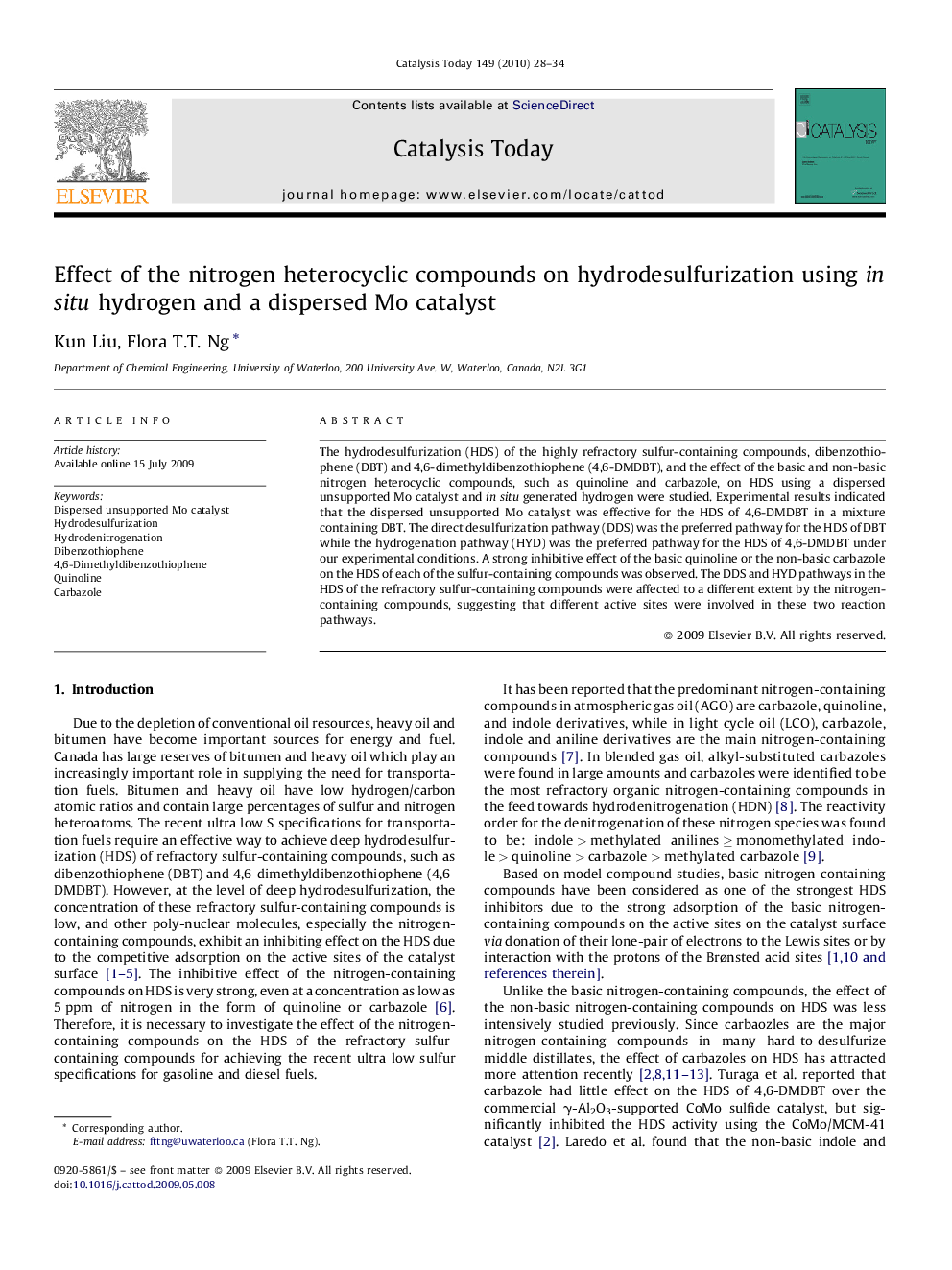| Article ID | Journal | Published Year | Pages | File Type |
|---|---|---|---|---|
| 56902 | Catalysis Today | 2010 | 7 Pages |
The hydrodesulfurization (HDS) of the highly refractory sulfur-containing compounds, dibenzothiophene (DBT) and 4,6-dimethyldibenzothiophene (4,6-DMDBT), and the effect of the basic and non-basic nitrogen heterocyclic compounds, such as quinoline and carbazole, on HDS using a dispersed unsupported Mo catalyst and in situ generated hydrogen were studied. Experimental results indicated that the dispersed unsupported Mo catalyst was effective for the HDS of 4,6-DMDBT in a mixture containing DBT. The direct desulfurization pathway (DDS) was the preferred pathway for the HDS of DBT while the hydrogenation pathway (HYD) was the preferred pathway for the HDS of 4,6-DMDBT under our experimental conditions. A strong inhibitive effect of the basic quinoline or the non-basic carbazole on the HDS of each of the sulfur-containing compounds was observed. The DDS and HYD pathways in the HDS of the refractory sulfur-containing compounds were affected to a different extent by the nitrogen-containing compounds, suggesting that different active sites were involved in these two reaction pathways.
